While growing up on a Missouri farm during the 1940s, George Hoffman’s passion was hunting quail with his father and an uncle. Years later, after earning an engineering degree, he and his wife, Mary, relocated to Pampa, Texas, where both became avid deer hunters. Then it was on to Farmington, New Mexico, at a time when the Jicarilla Apache Indian Reservation and the Carson National Forest had excellent populations of mule deer and elk. George used a Remington Model 721 in 270 Winchester to take his share of good bucks and bulls. In 1968, his employer moved him to Gunnison, Colorado, to develop mining properties. By that time he had gained enough experience to begin outfitting and guiding hunters in his spare time. While doing so, George became acquainted with Cotton Gordon, another outfitter in the area who would later become one of few Americans to obtain a professional hunter’s license in Africa. In the meantime, George had started handloading his ammunition.
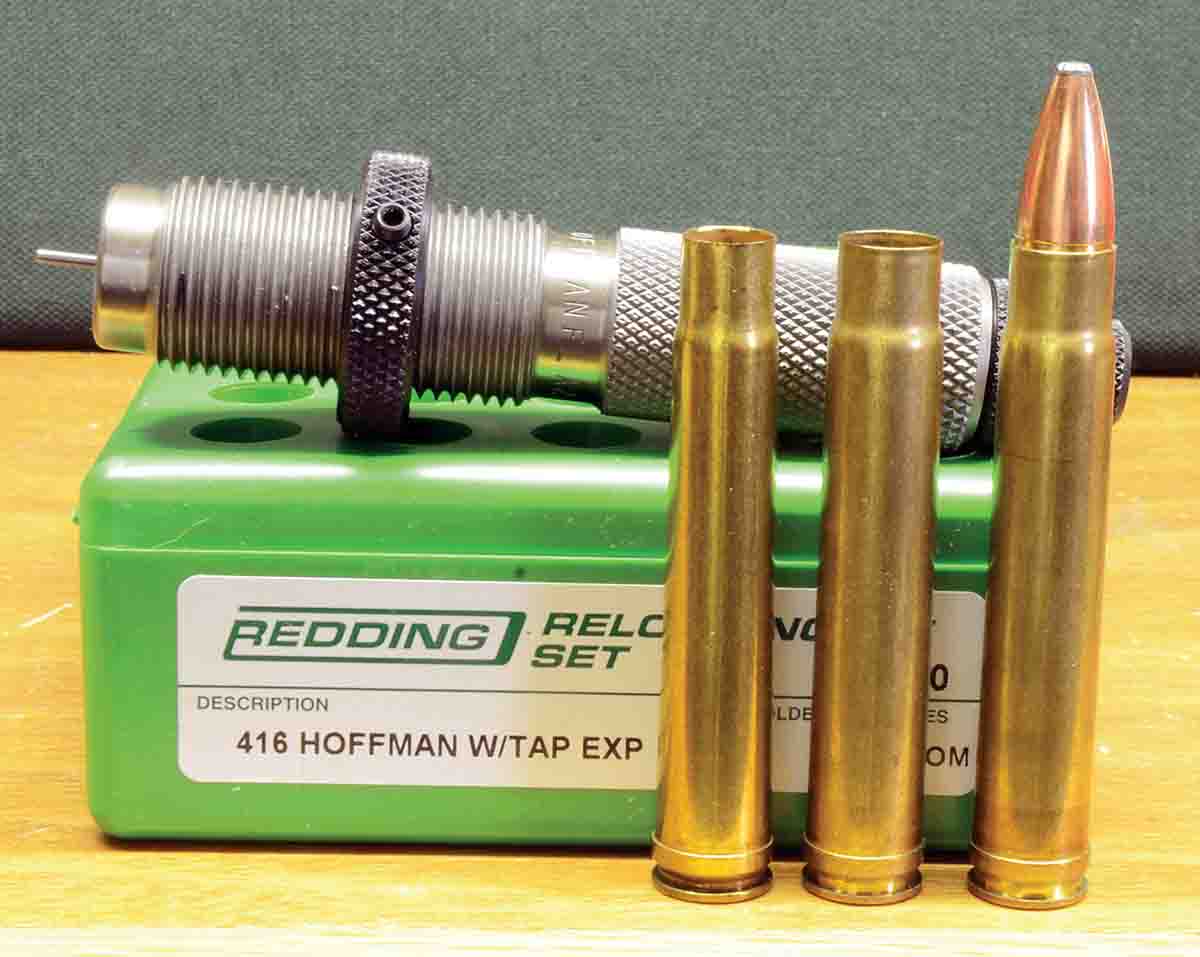
George Hoffman formed his cartridge by necking up the 375 H&H Magnum case and fireforming to decrease body taper and sharpen shoulder angle. The tapered expander in the Redding full-length sizing makes necking up easy with no case loss. Left to right: a 375 H&H Magnum case, a case necked up and fireformed and a 416 Hoffman loaded round.
In 1971, Hoffman learned that he would soon be transferred to a large mining operation in Phalaborwa, South Africa. While outfitting in Colorado, he had developed a working relationship with several people at Klineburger of Seattle, a company heavily into booking hunts around the world. Unsure of how long he would be on the Dark Continent, George struck while the opportunity was hot by booking a hunt for buffalo in Mozambique. The largest caliber rifle he owned at the time was in 338 Winchester Magnum and he used it to take a 42-inch bull. His stay in Africa lasted longer than expected.
In 1974, Hoffman became one of a few Americans to become licensed as a professional hunter in Africa. He was equally proud of the fact that his daughter, Cynthia, later became the first woman to earn a professional hunter license in South Africa. During the following decades, George guided hunters in eight African countries for elephant, buffalo, hippo, lion, leopard and the various antelope. After using rifles chambered for various cartridges for backing his clients, he decided on the 416 caliber because it had the power needed for quickly stopping a close-distance charge while shooting flat enough to reach across a large open area to prevent an animal wounded by a client from escaping. The 416 Taylor he tried did not have enough powder capacity, while an action large enough to handle the 416 Rigby he so desired, was beyond the limitations of his budget.
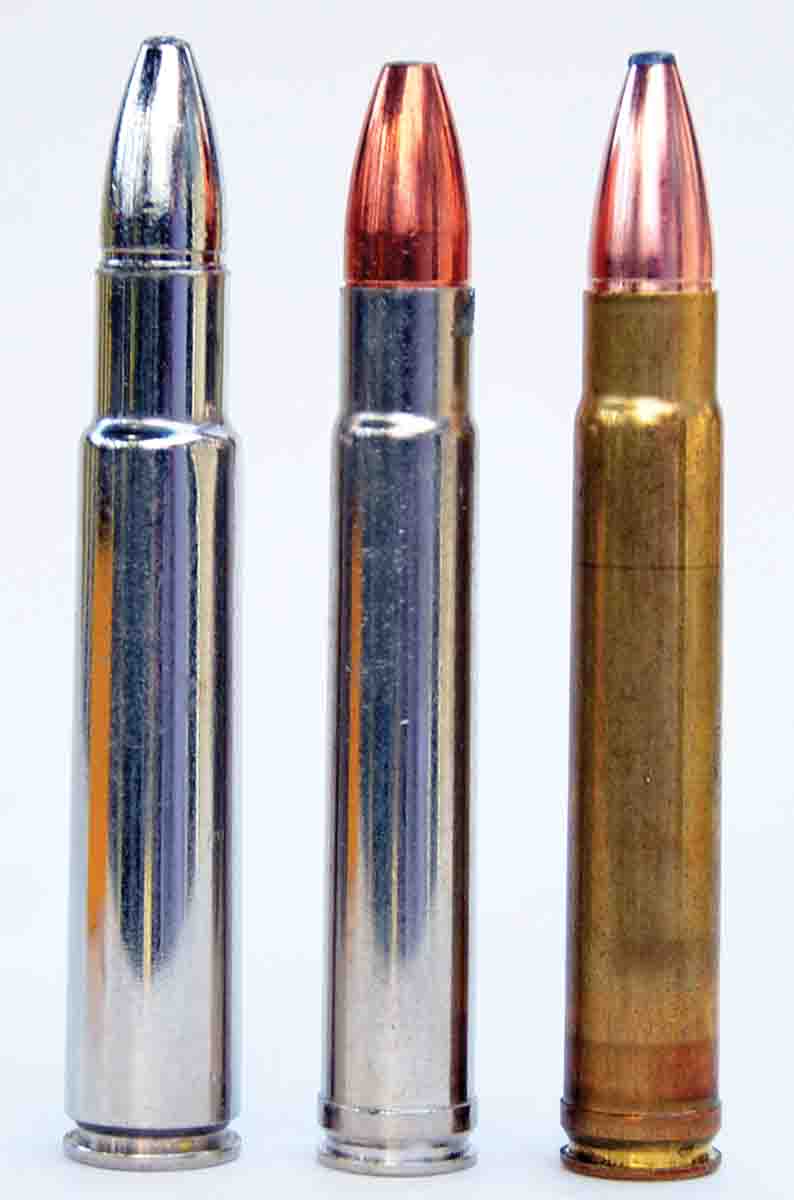
George Hoffman wanted a rifle in 416 Rigby, but its cost was beyond his budget, so he developed his own cartridge of the same caliber on the 375 H&H Magnum case. With later changes made to the Hoffman case, it became known as the 416 Remington Magnum. The Remington cartridge can be fired in a rifle chambered for the Hoffman cartridge but not conversely. Left to right: a 416 Rigby, a 416 Remington Magnum and a 416 Hoffman.
While working in his reloading room during the late 1970s, George discovered several cases for the 375 Weatherby Magnum, which is an improved version of the 375 H&H Magnum. When a Powley computer predicted 2,500 feet per second (fps) for a 400-grain, .416-caliber bullet, the old light bulb inside his head began shining brightly. Browsing the racks in several gun shops turned up a Remington Model 700 in 375 H&H Magnum with an unusually fat barrel (in those days the barrels of Model 700s in 375 H&H and 458 Winchester were of the same diameter). Bill Atkinson of Atkinson and Marquardt in Prescott, Arizona, rebored the barrel for .416-inch bullets and after rechambering with a 375 Weatherby Magnum reamer, he used a second reamer to cut a larger neck diameter. The Weatherby cases were not easy to find so Hoffman eventually switched to necking up and fireforming 375 H&H Magnum brass.
Hoffman used that first rifle for several years, and as interest in the cartridge among other hunters increased, he abandoned the Weatherby double-radius shoulder and went with a standard 24-degree angle. Muzzle velocity with a 400-grain bullet ranged from 2,400 to 2,450 fps. After using his cartridge enough to become convinced of its effectiveness on buffalo and elephant, Hoffman wrote about it in Safari magazine and received numerous inquiries from sport hunters as well as professional hunters in Africa. A couple of gunsmiths in South Africa began building rifles in 416 Hoffman and shipped them to professional hunters there and in other African countries.
Dumoulin of Belgium obtained 416 Hoffman chamber reamers during the 1980s and became the first company to offer factory-built rifles chambered for the cartridge. Back in America, A-Square eventually offered rifles, loaded the ammunition and unprimed cases with the proper headstamp. On several occasions, Hoffman discussed his cartridge with officials at Remington, but in his words, they were “ho-hum about it.” He received more interest from Winchester, but it was short-lived due to a lack of funding for new projects at that time.
When engineers at Remington began the development of a new .416-caliber cartridge on the 8mm Remington Magnum case, Hoffman was retained as a consultant. The cartridge introduced in 1988 as the 416 Remington Magnum differed mainly in a longer case neck that exceeded bullet diameter. This was accomplished by moving the shoulder back a bit and while doing so decreased case capacity, it was not enough to make a big difference in bullet speed. The shoulder angle remained close to the same. The maximum velocity of both cartridges loaded with 400-grain bullets is around 2,400 fps, so the performance on game is the same. While the longer neck of the Remington cartridge exerts a bit more tension on a seated bullet, a hard roll crimp applied to bullets seated in either case along with light compression of the powder charge during bullet seating will prevent recoil-induced setback.
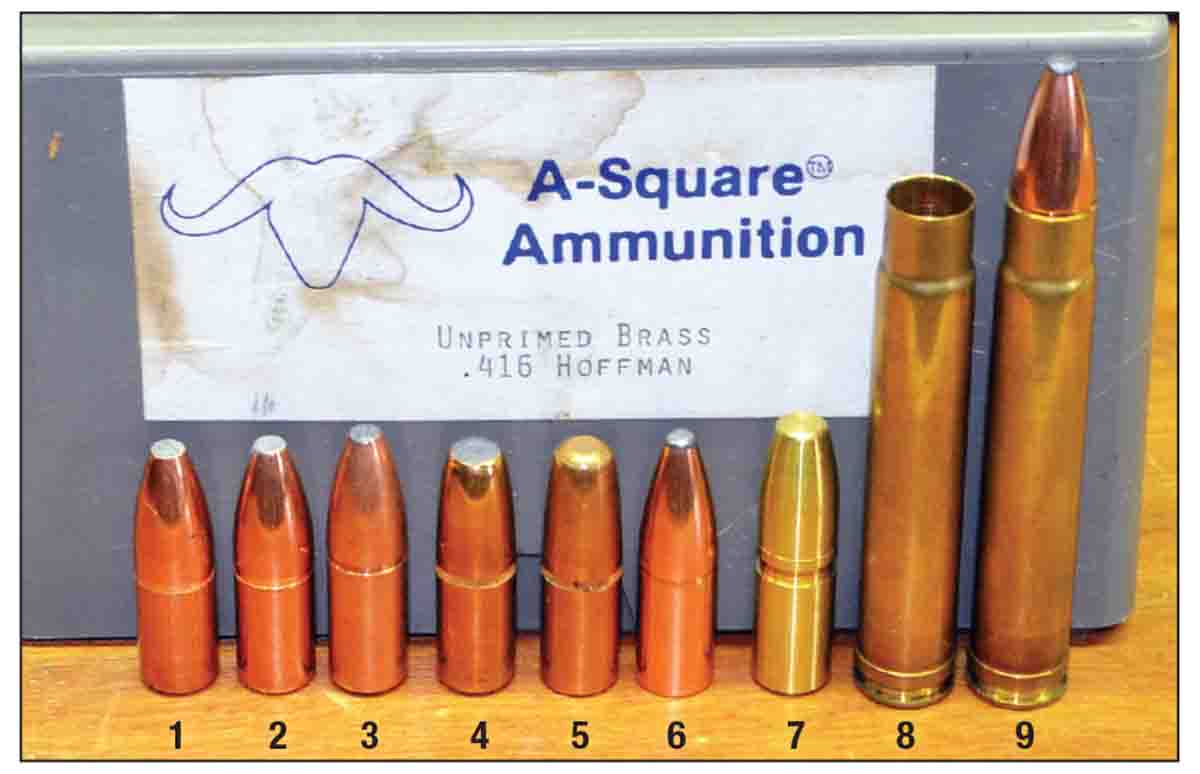
Excellent bullets for handloading in any .416-caliber cartridge, including the Hoffman, are: (1) 350-grain Swift A-Frame, (2) 400-grain Swift A-Frame, (3) 400-grain Trophy Bonded Bear Claw, (4) 400-grain Hornady DGSB, (5) 400-grain Hornady DGS, (6) 400-grain Nosler Partition, (7) 400-grain Nosler Solid, (8) 400-grain A-Square Hoffman case and (9) a 416-grain Hoffman loaded with a 400 Nosler Partition.
Brass can be formed by necking up 8mm Remington Magnum and 375 H&H Magnum cases and a tapered expander in the Redding the 416 Hoffman sizing die makes doing so easy. When 416 Remington Magnum cases can be found, using them is even easier. Powders commonly used in handloads for the Remington cartridge work equally well in the Hoffman cartridge. Simply begin with starting powder charge weights listed in various reloading manuals for the 416 Remington Magnum and go from there.
The only rifle in 416 Hoffman I have shot was loaned to me many years ago by its maker, Art Alphin, who founded A-Square in 1979. For those who do not know, before retiring from the U.S. Army with a degree in weapons systems engineering, Alphin taught at West Point where he had once been a student. During a lengthy visit with him at his shop in Bedford, Kentucky, I had the opportunity to shoot rifles chambered for the Hoffman cartridge as well as the 450 Ackley Magnum and the 500 A-Square. Shortly after my return home, Art sent the 416 Hoffman along with load data and a supply of his bullets and unprimed cases.
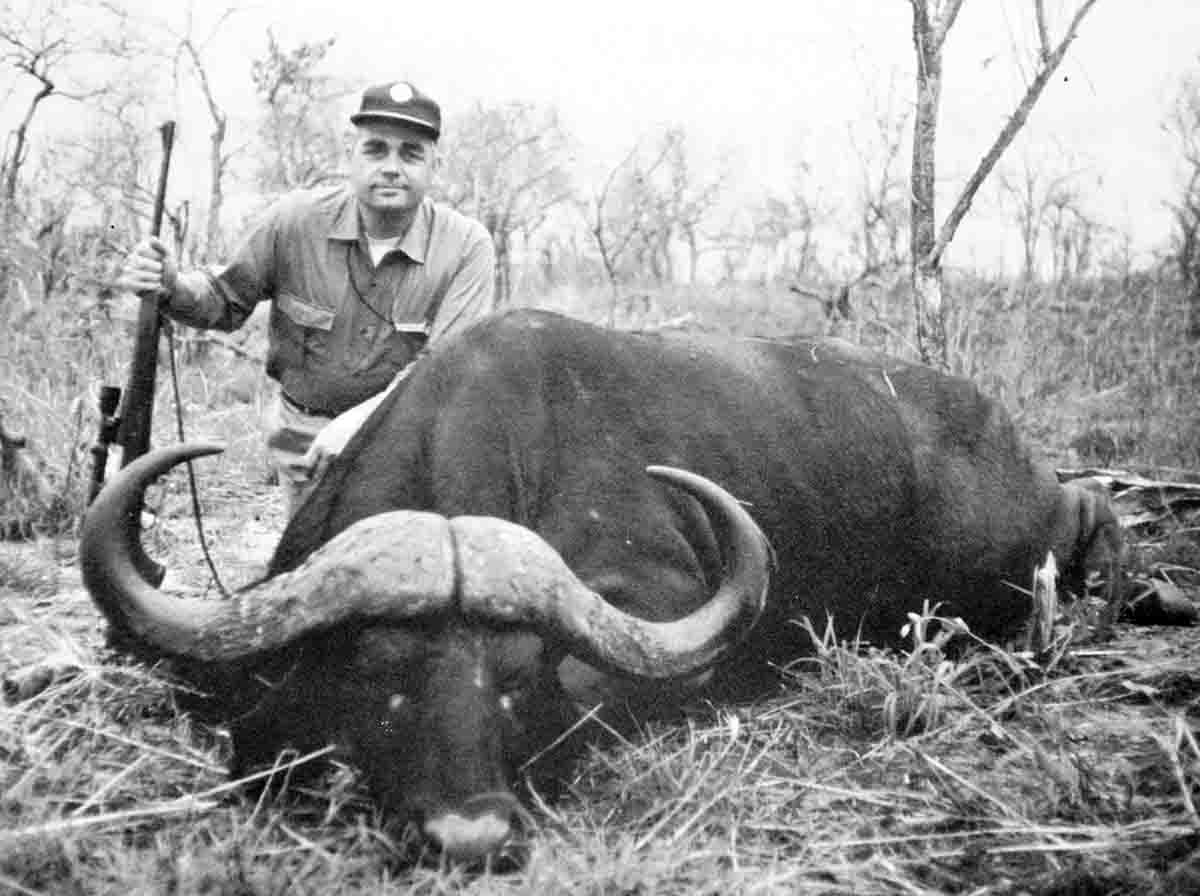
George Hoffman with a good Cape buffalo taken in Mozambique with a custom rifle on the Remington 700 action in 416 Hoffman.
The Hannibal model weighed just over 10 pounds with a Zeiss 1.4-4.5x scope and that along with an oversized stock shaped to minimize recoil made it surprisingly comfortable to shoot. Alphin had the latest in pressure-testing equipment and he had his own line of cartridges up to and including the huge 577 Tyrannosaur loaded with a 750-grain bullet at 2,460 fps for just over 10,000 foot-pounds of stopping power. Each squeeze of the trigger caressed the shoulder of the shooter with about 150 foot-pounds of recoil. Alphin also developed a line of proprietary cartridges for Dakota Arms.
A number of gunsmiths around the world have built rifles in 416 Hoffman with quite a few of them probably still in use. With the introduction of the 416 Remington Magnum, there was no longer a logical reason for chambering a new rifle for the Hoffman version. But for someone who already has a rifle chambered for George Hoffman’s grand old buffalo thumper, there is no logical reason for changing out its barrel since 416 Remington Magnum ammunition can be fired with equal accuracy and stopping power.
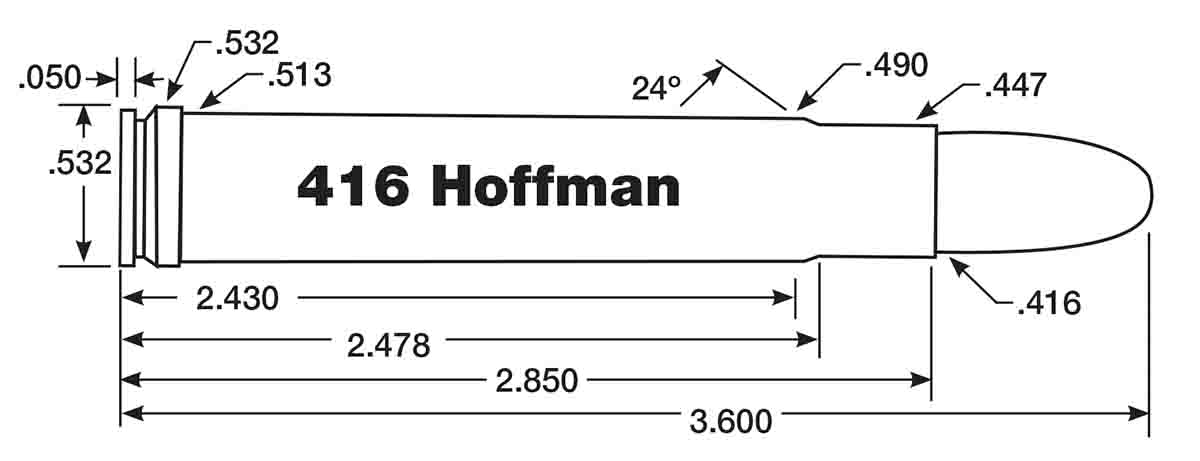




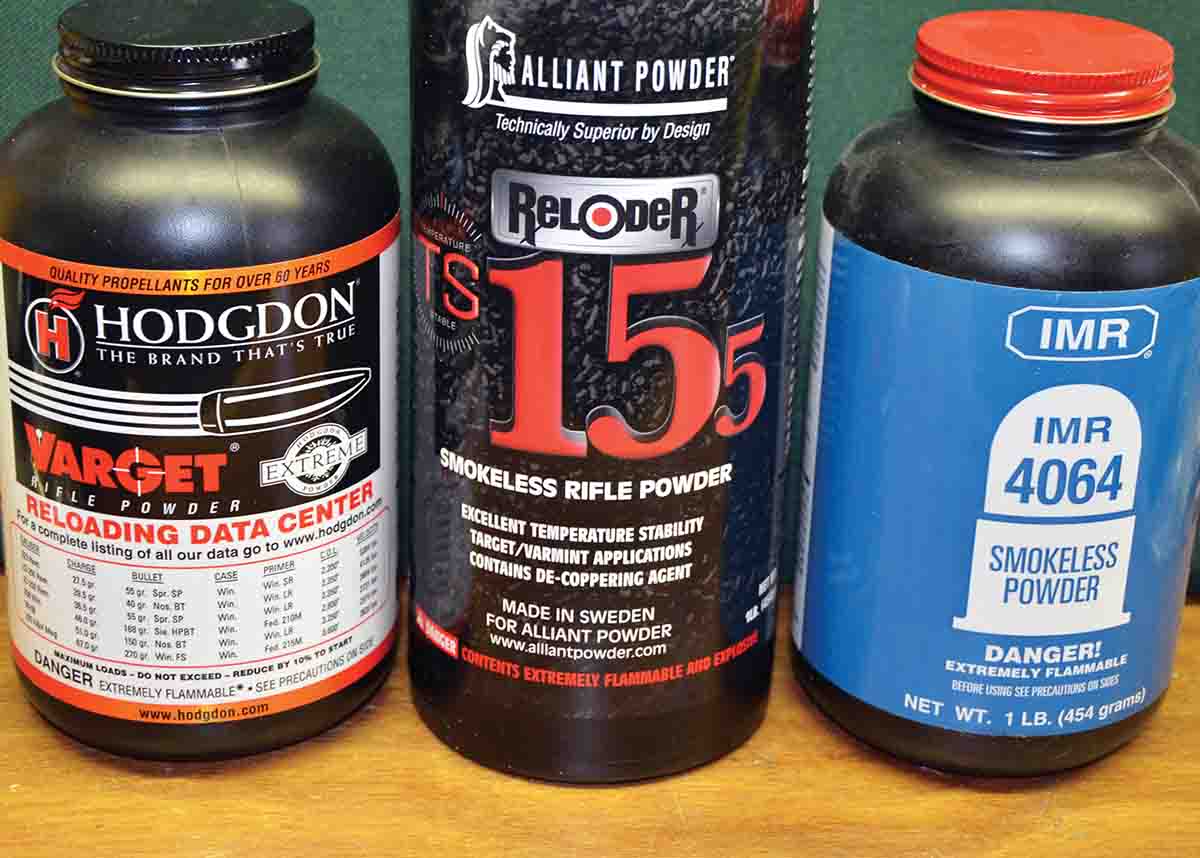
.jpg)


